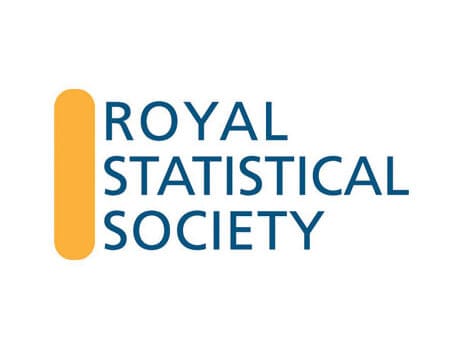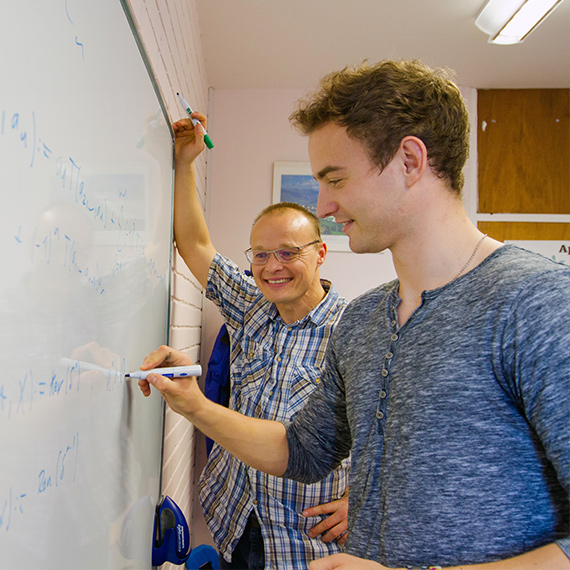Clinical trials are planned experiments on human beings designed to assess the relative benefits of one or more forms of treatment. For instance, we might be interested in studying whether aspirin reduces the incidence of pregnancy-induced hypertension, or we may wish to assess whether a new immunosuppressive drug improves the survival rate of transplant recipients.
This module combines the study of technical methodology with discussion of more general research issues, beginning with a discussion of the relative advantages and disadvantages of different types of medical studies. The module will provide a definition and estimation of treatment effects. Furthermore, cross-over trials, issues of sample size determination, and equivalence trials are covered. There is an introduction to flexible trial designs that allow a sample size re-estimation during the ongoing trial. Finally, other relevant topics such as meta-analysis and accommodating confounding at the design stage are briefly discussed.
Students will gain knowledge of the basic elements of clinical trials. They will develop the ability to recognise and use principles of good study design, and will also be able to analyse and interpret study results to make correct scientific inferences.
This module introduces the expectation-maximisation algorithm, an iterative algorithm for obtaining the maximum likelihood estimate of parameters in problems with intractable likelihoods. Students will explore the use of Markov chain Monte Carlo (MCMC) methods, and will discover the features of the Metro-Hastings algorithm, with emphasis on the Gibbs sampler, independence sampler and random walk Metropolis. Whilst relating to this, students will consider how such methods are closely integrated with Bayesian modelling techniques such as hierarchal modelling, random effects and mixture modelling.
Data augmentation will receive recurring coverage over the course of the module. Students will also gain transferrable knowledge of the usefulness of computers in assisting statistical analysis of complex methods, in addition to experience with the computer statistical package R.
Hierarchical data arise in a multitude of settings, specifically whenever a sample is grouped (or clustered) according to one or more factors with each factor having many levels. For instance, school pupils may be grouped by teacher, school and local education authority. There is a hierarchical structure to this grouping since schools are grouped within local education authority and teachers are grouped within schools. If multiple measurements of a response variable, say test score, are made for each pupil across multiple measurement times, the data are also longitudinal.
This module motivates the need for statistical methodology to account for these kinds of hierarchical structure. The differences between marginal and conditional models, and the advantages and disadvantages of each, will be discussed. Linear mixed effects models (LMMs) for general multi-level data will be introduced as an extension to the linear regression model. Longitudinal data will be introduced as a special case of hierarchical data motivating the need for temporal dependence structures to be incorporated within LMMs. Finally, the drawbacks of LMMs will be used to motivate generalised linear mixed effects models (GLMMs), with the former a special case of the latter. GLMMs broaden the scope of data sets which can be analysed using mixed-effects models to incorporate all common types of response variable.
All modelling will be carried out using the statistical software package R.
Introducing epidemiology, the study of the distribution and determents of disease in human population, this module presents its main principles and statistical methods. The module addresses the fundamental measures of disease, such as incidence, prevalence, risk and rates, including indices of morbidity and mortality.
Students will also develop awareness in epidemiologic study design, such as ecological studies, surveys, and cohort and case-control studies, in addition to diagnostic test studies. Epidemiological concepts will be addressed, such as bias and confounding, matching and stratification, and the module will also address calculation of rates, standardisation and adjustment, as well as issues in screening.
This module provides students with a historical and general overview of epidemiology and related strategies for study design, and should enable students to conduct appropriate methods of analysis for rates and risk of disease. Students will develop skills in critical appraisal of the literature and, in completing this module, will have developed an appreciation for epidemiology and an ability to describe the key statistical issues in the design of ecological studies, surveys, case-control studies, cohort studies and RCT, whilst recognising their advantages and disadvantages.
This module addresses a range of topics relating to survival data; censoring, hazard functions, Kaplan-Meier plots, parametric models and likelihood construction will be discussed in detail. Students will engage with the Cox proportional hazard model, partial likelihood, Nelson-Aalen estimation and survival time prediction and will also focus on counting processes, diagnostic methods, and frailty models and effects.
The module provides an understanding of the unique features and statistical challenges surrounding the analysis of survival avant history data, in addition to an understanding of how non-parametric methods can aid in the identification of modelling strategies for time-to-event data, and recognition of the range and scope of survival techniques that can be implemented within standard statistical software.
General skills will be developed, including the ability to express scientific problems in a mathematical language, improvement of scientific writing skills, and an enhanced range of computing skills related to the manipulation on analysis of data.
On successful completion of this module, students will be able to apply a range of appropriate statistical techniques to survival and event history data using statistical software, to accurately interpret the output of statistical analyses using survival models, fitted using standard software, and the ability to construct and manipulate likelihood functions from parametric models for censored data. Students will also gain observation skills, such as the ability to identify when particular models are appropriate, through the application of diagnostic checks and model building strategies.



















